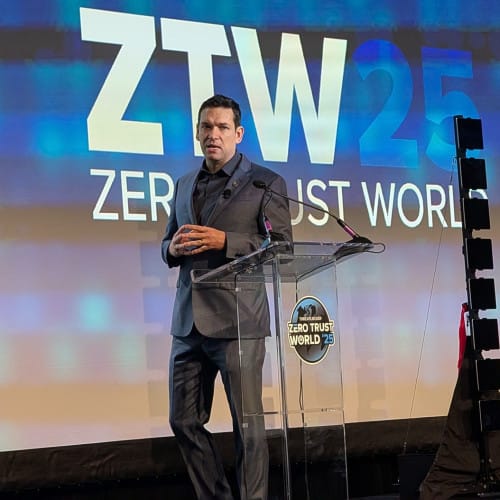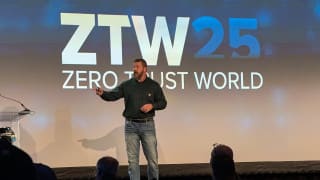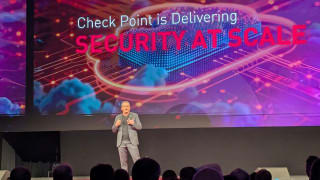Don't run what you cannot trust.
Speaking in the opening session of the Threatlocker Zero Trust World conference in Orlando, Threatlocker CEO and co-founder Danny Jenkins talked about the need to consider a different strategy in cyber defence.
Telling a story of resolving a ransomware case in 2014 for a small insurance company, and the investigation led to the anti-virus software being removed. When asked by the business’ owner how this could be stopped from happening again, Jenkins said it was simple: just block all untrusted software. “Don't allow anything to run except what you need because he said ‘we did’.”
Jenkins said if you don't allow software to run, malware cannot run because it's just software. He said when the company’s IT said Jenkins was ‘delusional’ with this strategy, and not to listen to him, but he insisted “this is the best way to do it.”
“I've been working in security a long time, but then I started looking at ‘how do I actually Implement this for a company with 50 something employees’ or with a thousand employees, or a company with a strong security posture? It was actually very difficult, and that is why Threatlocker was created.”
He explained the company has one mission; to change the paradigm of security from default allow to default deny.
“I remember when we started the company, we wanted to get a big organisation to use our services, and we wanted to get a small organisation to use our services because we figured if we can get both types of company to use our services, not just buy it, lock down their machines, and be protected, we can get the entire world to use our services.”
Jenkins said he doesn’t expect everyone to leave the conference “knowing how to solve every IT security issue, but I hope two things one is, your eyes are opened, and you are shown things you didn't think about.
“Now, I don't want you to take those things and suddenly just try and address them, I want you to think slightly differently,” he said. “If you go away and say ‘I didn't know this’ and if I didn't know it, how can I protect from it? Then I want you to think about how you can protect using the default-deny posture, because if you deny by default, you're not chasing every single threat.”
Written by
Dan Raywood
Senior Editor
SC Media UK
Dan Raywood is a B2B journalist with more than 20 years of experience, including covering cybersecurity for the past 16 years. He has extensively covered topics from Advanced Persistent Threats and nation-state hackers to major data breaches and regulatory changes.
He has spoken at events including 44CON, Infosecurity Europe, RANT Conference, BSides Scotland, Steelcon and ESET Security Days.
Outside work, Dan enjoys supporting Tottenham Hotspur, managing mischievous cats, and sampling craft beers.










